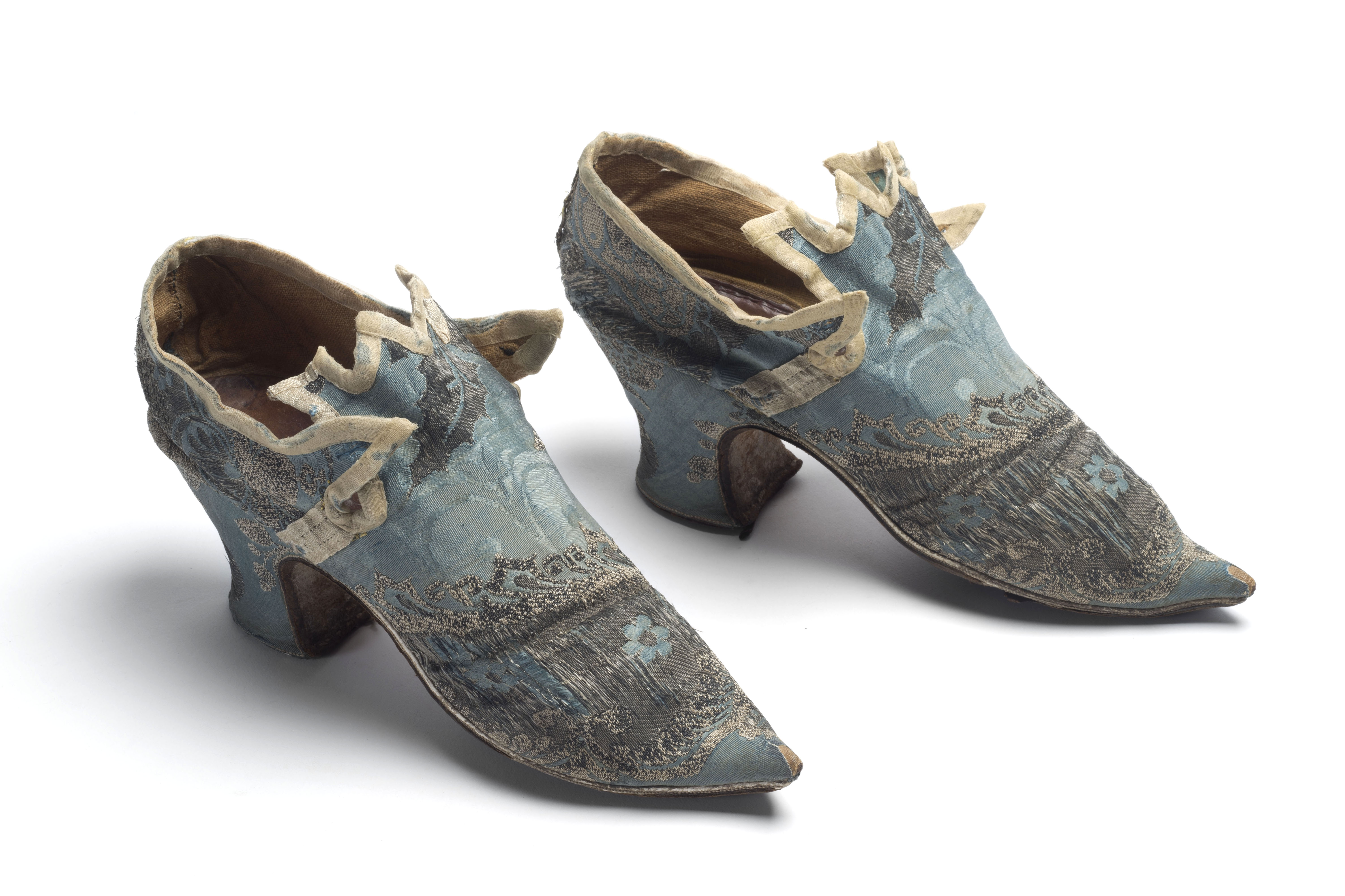
“I don’t know who invented the high heel,” said Marilyn Monroe, “but women owe him a lot.”
Well, Marilyn, there are a lot of people to thank. The high heel wasn’t really invented, it evolved over time thanks to Venetian prostitutes, British queens and French designers.
The new book “Shoes: An Illustrated History” by Rebecca Shawcross (Bloomsbury), charts the many ways we’ve clad our feet, from the oldest known shoes (mocassin-like footwear dating from 3500 BC, and discovered in a cave in Armenia) to the wild styles of today.
Along the way, Shawcross explains how high heels became synonymous with feminine sexuality.
Here’s a quick look of who’s on Marilyn’s “thank you” list:
1.Chopines c. 1400s

Women’s platform shoes, or chopines, are thought to have originated with prostitutes in Venice. The shoes, which reached heights up to 18 inches, raised a woman above her rivals and gave her a sensuous gait for prospective clients.
Eventually they became popular among the aristocracy, both in Italy and the Ottoman Empire. They indicated that you were so wealthy you didn’t need to work, or really walk.
2.The first heels c. 1590

The origin of high heels is debated. Some think they evolved from chopines. Others say they arrived from the Near East, from male equestrian footwear meant to straddle the stirrup.
Either way, the first documented wearer of European high heels is Queen Elizabeth I. She was painted wearing a pair, and in “Queen Elizabeth’s Wardrobe Unlock’d,” clothing historian Janet Arnold includes a list of the queen’s clothes from 1595, with “a payre of spanyshe lether shoes with highe heels and arches.”
Early shoes, like the ones pictured here, often used straps called “latchets” with lace or ribbon ties — an early form of shoelaces.
3.Viva la difference! c. 1660

Men’s and women’s shoe styles were roughly the same until about 1660. After that point, men’s shoes tended to be more practical, while women’s shoes became more ornate, with silks, brocades, braids and velvet.
These blue-velvet, latchet-tie shoes are lined with white kid leather and are embroidered with padded floral motifs.
4.The red heel 1670

The first Louboutins! King Louis XIV of France started many fashion trends, including red heels and soles.
From his early 20s until he was at least 63 years old, Louis XIV had his heels covered in red Morocco leather or painted that color. His subjects couldn’t get enough of the knockoffs, like these women’s green velvet mules.
5.Pompadour heel c. 1750

The French, or Pompadour heel, was named after Madame de Pompadour, mistress to King Louis XV. The narrow, curved heels were notoriously difficult to walk in, but nevertheless made for a fantastic boudoir shoe.
This style spread from Paris across Europe. An 18th century satirical poem noted, “Mount on French heels, When you go to the ball — ’Tis the fashion to totter and show you can fall.”
6.Going flat c. 1840s

Perhaps spurred by revolutions in America and France and the rejection of royalty, the heel on women’s footwear became lower and lower at the beginning of the 19th century, until it disappeared altogether.
Popular styles were wore square-toed slippers with ribbon ties, forerunners of the ballet slipper. Empress Josephine, wife of Napoleon, was said to have owned more than 300 pairs.
7.Return of the heel c. 1850

After the slipper fad died out, heels started to creep back up, to 1/2 inch in 1851 and 21/2 inches by 1860. Brass heel pieces began to appear in the later half of the 19th century, which supported even higher heels.
It was during this period that the “classic women’s court shoe” — what Americans would call the “pump” — emerged. The versatile style, like this suede leather court shoe from 1900, was widely worn and advertised.
8.The stiletto 1953

Christian Dior brought back French shoe style after WWII, lifting the heels on court shoes and making them more ornate.
Shoe designer Roger Vivier, who worked for Dior, took credit for inventing the stiletto heel, using plastic innovations to create a slender heel of incredible strength — which he called “the needle.”
The shoes helped create the modern sex symbol, as Marilyn Monroe was said to shave a quarter inch off one of her stilettos so that she walked with a wiggle.
Shoe photos courtesy of Northampton Museums and Art Gallery and Elephant Book Company. Excerpted with permission from “Shoes: An Illustrated History” by Rebecca Shawcross. Out now from Bloomsbury Publishing Plc.
ncG1vNJzZmimqaW8tMCNnKamZ2JlfnZ7j2pma21fqbWmeceiqq2noq56sLKMoaCgoF2dsqa40madq6edYsOmusicnGaooqTAtbXTrqueq12pvG6%2F06KjnqykpMBw